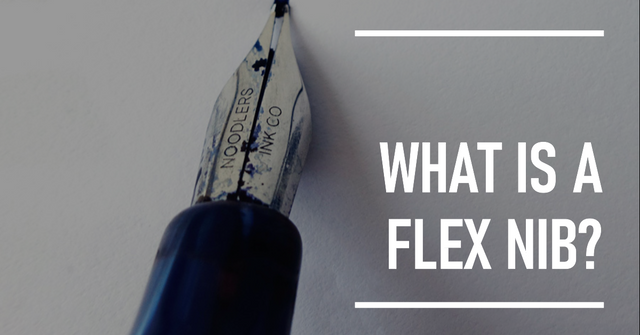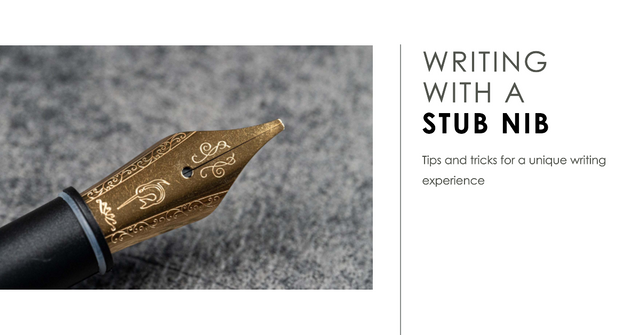Key Takeaways
- The Architect nib is a unique type of fountain pen nib that produces thick horizontal strokes and thin vertical strokes.
- Its rectangular grind and unique design allow for distinctive line variation.
- The writing experience with an Architect nib depends on the writing angle and offers a different style and aesthetic.
- An Architect nib can be acquired through buying a new pen, using nib grinding services, or DIY grinding.
- Maintain an Architect nib by regularly cleaning it, storing it properly, and using gentle pressure when writing.
- Experiment with the writing angle, use light pressure, and try different inks for the best results with an Architect nib.
Introduction
The world of fountain pens is diverse and fascinating, with one of the most intriguing aspects being the variety of nibs available.
Among these, the Architect nib stands out due to its unique design and the distinctive writing style it produces.
This article will delve into the details of the Architect nib, exploring its design, function, and the unique writing experience it offers.
Defining the Architect Nib
An Architect nib, also known as a Hebrew or Arabic nib, is a unique type of fountain pen nib that is characterized by its distinctive grind.
Unlike standard nibs, the Architect nib is ground in such a way that it produces:
- Thick horizontal strokes: When you move the pen from left to right or right to left, the lines produced are wider. This is because the writing edge of the nib is wider in the horizontal direction.
- Thin vertical strokes: Conversely, when you move the pen upwards or downwards, the lines produced are thinner. This is due to the narrow vertical grind of the nib.
This unique combination of thick and thin strokes gives the Architect nib its distinctive character and makes it particularly suited for certain styles of writing, such as those used in architectural drawings and certain scripts like Arabic and Hebrew, which have a lot of horizontal lines.
However, it's important to note that the writing experience with an Architect nib can vary greatly depending on the angle at which you hold your pen, which we will explore in more detail in the following sections.
The Design and Function of an Architect Nib
The Architect nib owes its unique writing style to its distinctive design.
Unlike conventional nibs, the tip of an Architect nib is ground to a rectangular shape.
This design is what allows the nib to produce its characteristic line variation.
Design Features
- Rectangular grind: The tip of the nib is ground to a rectangular shape, with the horizontal edge being wider than the vertical edge. This results in wider horizontal strokes and narrower vertical strokes.
- Tipping material: Like other nibs, the Architect nib is often tipped with a hard material such as iridium to withstand the pressure of writing.
- Nib material: The body of the nib can be made from various materials, including gold, steel, or titanium. The choice of material can affect the flexibility and durability of the nib.
Function
The unique design of the Architect nib influences its function in several ways:
- Line variation: The rectangular grind of the nib allows it to produce a distinctive line variation, with wider horizontal strokes and narrower vertical strokes.
- Writing angle: The writing experience with an Architect nib can vary greatly depending on the angle at which you hold your pen. A more upright angle will result in thinner lines, while a lower angle will produce thicker lines.
- Writing style: The Architect nib is particularly suited for scripts with a lot of horizontal lines, such as architectural drawings, Arabic, and Hebrew scripts. However, it can be used for any writing style that benefits from its unique line variation.
In the next section, we will delve deeper into the writing experience with an Architect nib and provide some tips for getting the most out of this unique nib type.
The Writing Experience with an Architect Nib
Writing with an Architect nib is a unique experience that differs significantly from using standard nibs.
The distinctive line variation it produces can add a new dimension to your handwriting or drawing.
Line Variation
The most notable feature of the Architect nib is the line variation it produces.
The thick horizontal strokes and thin vertical strokes can give your writing a distinctive style that stands out.
This line variation can be particularly effective in:
- Handwriting: The Architect nib can add character to your handwriting, making it appear more dynamic and stylized.
- Drawing: The line variation can add depth and texture to your drawings, especially architectural sketches or any artwork that involves a lot of linear elements.
Writing Angle
The writing angle plays a crucial role when using an Architect nib.
The angle at which you hold your pen can significantly affect the thickness of the lines:
- Upright angle: Holding the pen at a more upright angle will result in thinner lines.
- Lower angle: Holding the pen at a lower angle will produce thicker lines.
It's worth experimenting with different writing angles to find the one that gives you the desired line thickness and suits your writing style best.
In the next section, we will discuss how to acquire and maintain an Architect nib to ensure a smooth and enjoyable writing experience.
Acquiring and Maintaining an Architect Nib
Once you've decided to explore the unique writing experience offered by an Architect nib, there are several ways to acquire one.
It's also important to know how to maintain your nib to ensure its longevity and optimal performance.
Acquiring an Architect Nib
- Buying a new pen: Some fountain pens come with an Architect nib. When purchasing, ensure to specify that you want an Architect nib.
- Nib grinding services: If you already have a fountain pen, you can have the nib ground to an Architect shape by a professional nibmeister.
- DIY grinding: For the more adventurous, there are resources available online that guide you through the process of grinding your nib into an Architect shape. However, this requires a steady hand and a good understanding of nib geometry.
Maintaining an Architect Nib
Maintaining an Architect nib is similar to caring for any other fountain pen nib.
Here are some general tips:
- Regular cleaning: Clean your nib regularly to prevent ink from drying and clogging the feed. Use lukewarm water and, if necessary, a mild pen cleaning solution.
- Proper storage: When not in use, store your pen in a pen case or holder with the nib pointing upwards to prevent ink from settling into the feed.
- Gentle use: Apply only light pressure when writing. Pressing too hard can damage the nib and affect its performance.
In the next section, we will provide some tips for writing with an Architect nib to help you get the most out of this unique writing tool.
Tips for Writing with an Architect Nib
Writing with an Architect nib can be a unique and enjoyable experience.
However, it may require some adjustments to your usual writing style.
Here are some tips to help you get the most out of your Architect nib:
- Experiment with the writing angle: The angle at which you hold your pen can significantly affect the line variation. Try different angles to find the one that suits your writing style and gives you the desired line thickness.
- Use light pressure: Unlike some other nib types, the Architect nib does not require heavy pressure to produce a good ink flow. In fact, applying too much pressure can damage the nib. Use a light touch for the best writing experience.
- Try different inks: The ink you use can also affect the writing experience. Some inks flow more freely than others, which can influence the line thickness and the smoothness of writing. Experiment with different inks to find the one that works best with your Architect nib.
- Practice: As with any new writing tool, practice is key. Spend some time getting used to the Architect nib and experimenting with different writing styles. With time, you'll learn to appreciate the unique character it brings to your writing.
Conclusion
The Architect nib offers a unique writing experience with its distinctive line variation and style.
Whether you're enhancing your handwriting or adding depth to your drawings, this nib can bring a new dimension to your work.
Remember, the key to mastering the Architect nib lies in understanding its design, experimenting with different writing angles, and practicing your technique.
Happy writing!

